How to Decide Where to Put Your Dog’s Crate In House?
Nothing divides the dog-owning community quite like the trusty crate. There are very divided opinions on how good or bad they are. On one end of the argument, some people believe them to be cramped and cruel, like literally putting your dog in a cage however this is a highly anthropomorphized point of view.
While you or I might look at a space like a crate and have no desire whatsoever to make our bed in there and snuggle down, dogs don’t see things the same way we do.

Dogs are not wolves, however, they are descended from them and therefore share a large amount of their genetics with them. Wolves sleep in dens, safe, small areas they dig into to help protect them from the elements and other animals. This is why many of our domestic dogs also enjoy the comfort and a nice hidey-hole to take their naps.
As long as crates are introduced properly and never used as a punishment, they should just be a comfortable area for your dog to spend time and have a nap.
What Are The Benefits of Crate Training Your Dog?
Crate training is useful for a wide range of reasons. Not only does it give your dog somewhere nice and comfortable to sleep where they can take themselves off for some quiet time but it gives you an extra tool in your home. Having a young dog on the go all the time can be hard and crates are a great form of communication with our dogs.
If you gradually build up the positive association your dog has with a crate, there’s usually another association that develops alongside it with no extra work and that is that the crate is a place to relax.
Some dogs aren’t born with off switches. High drive working breeds are developed to be able to do a job all day, sometimes without break. If you have a working dog puppy, this can often lead to what I call in my house, demon hours.
When you have a puppy who has been zooming around and getting into all kinds of mischief with no real rest, they can become overtired like children. Somewhere between 6 and 7 in the evening is usually when puppies have a burst of energy anyway and it can be worse and include more teeth pulling at your skin action than it would do if they were well-rested.
Using a crate as a signal for your puppy that it’s time to have a rest during the day is like hitting an off switch and can literally save your skin! It’s a useful tool to have as they grow and into adulthood where you also have a safe place. Crates can be used when dogs are anxious about new people entering the house or as a secure place to leave them when you have to go out.
When trained properly, crates are great.
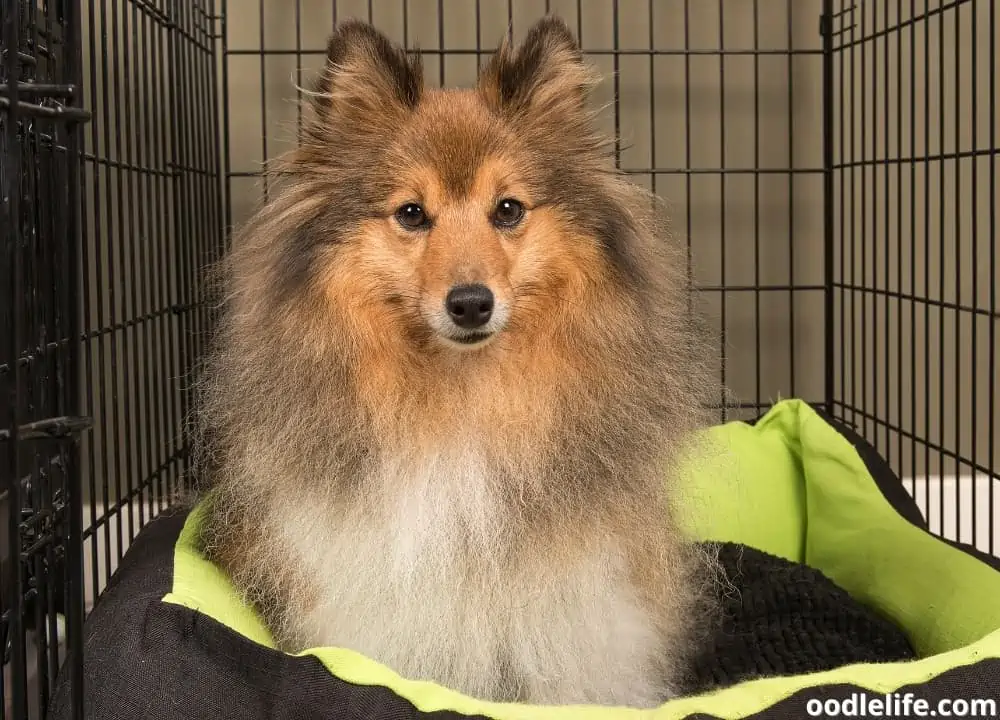
Why Does It Matter Where You Put Your Dog’s Crate?
You’re setting up your dog’s crate as a safe haven for them. A place to go and relax, take a nap, or even take their most valuable toys or chews for safekeeping. You want this environment to be somewhere they feel comfortable and can let their guard down in.
Good places to put a crate for your dog are entirely subjective to you and your dog. The places you might think your dog would want to relax and the places where your dog might choose to go may not always be the same thing.
If your dog decides the best place to sleep is in the doorway of your bedroom, you can’t go setting up a crate there unless you want to climb over it every single time you want to enter or leave your bedroom, it’s just not practical. Sometimes, you have to strike a compromise with your fluffy family member and find somewhere that suits you both. Or, you can just do what I did and set up multiple crates around the house to give your pampered pet some choice.
It only becomes unadvisable when your house is filled with more crates than actual furniture, trust me.
To find a good place to put your dog’s crate, first see where they relax and if they tend to go to certain rooms, set it up there. If you have a puppy and you want a full night’s sleep then the best place to put their crate is undoubtedly next to your bed. To save yourself from sleepless nights, research has found that having your new addition close to you so you can passively comfort them before you gradually move the crate back to its intended place as they get more comfortable in it is the quickest way to get them happy sleeping away from you.
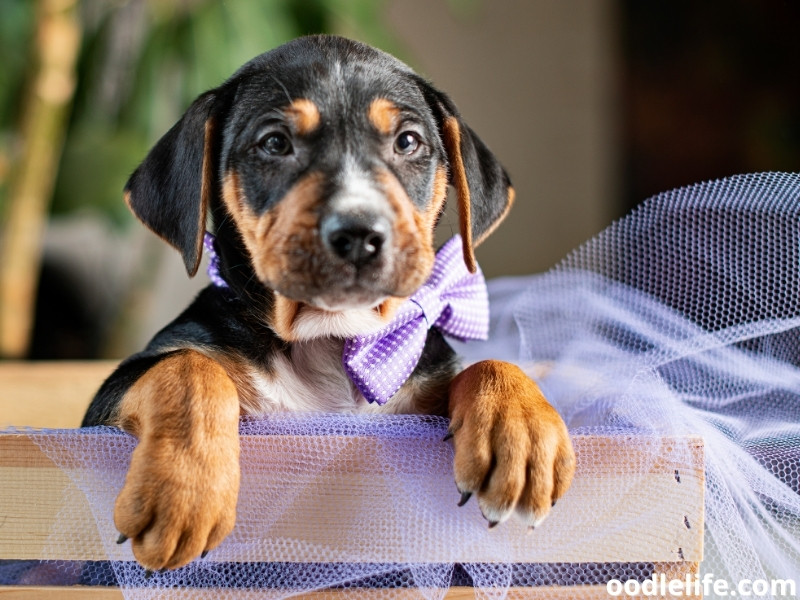
High Traffic Places To Put Your Dog’s Crate
Some dogs can feel like they’re missing out if you put their crate somewhere too quiet and secluded, which is exactly why you need to know your dog before deciding where their safe place will be. If you have a super social dog who likes to relax with you and is always around you then suddenly expecting them to settle elsewhere might be a bit much for them.
Social dogs often do well if their crate is in a well-traveled room. A corner in the kitchen can be great provided they don’t get too aroused when they smell you cooking or see someone getting a snack. Similarly, if you have a hallway you tend to pass by often, this could also be a good option.
Hallways are often quite quiet but with a fair amount of passing footfall as you go between rooms. The action of people walking past can help your dog know you’re still around while giving them a quiet environment to settle in.
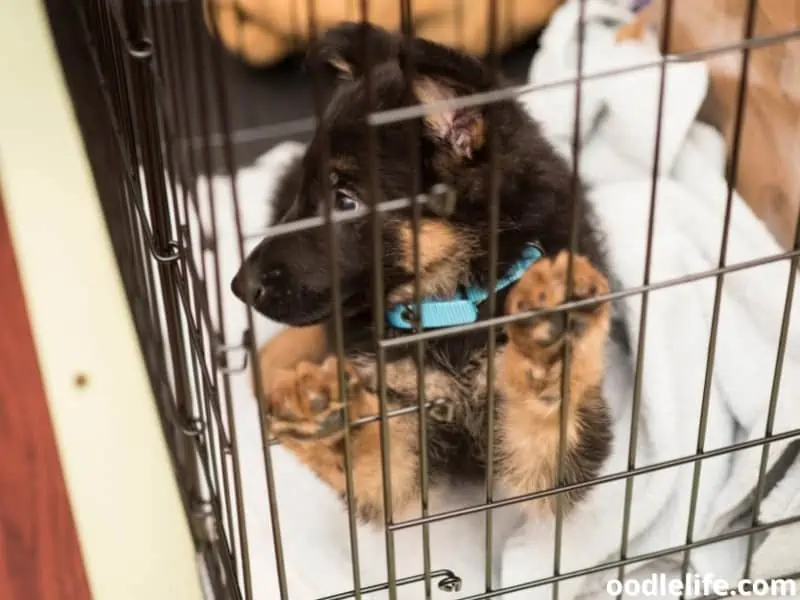
Secluded Spots For Your Dog’s Crate
For dogs who enjoy quiet areas, it’s a little easier to figure out the right balance. From a quiet corner in your living room where you only go to settle to your bedroom, both are great choices. Choosing a room where you also plan to relax in can help your dog grow a faster association with the room.
Sometimes though, even this can be too busy for them. If your dog needs somewhere even more secluded, a guest bedroom where people rarely go or even a room of their own can be great choices to give them some peace.
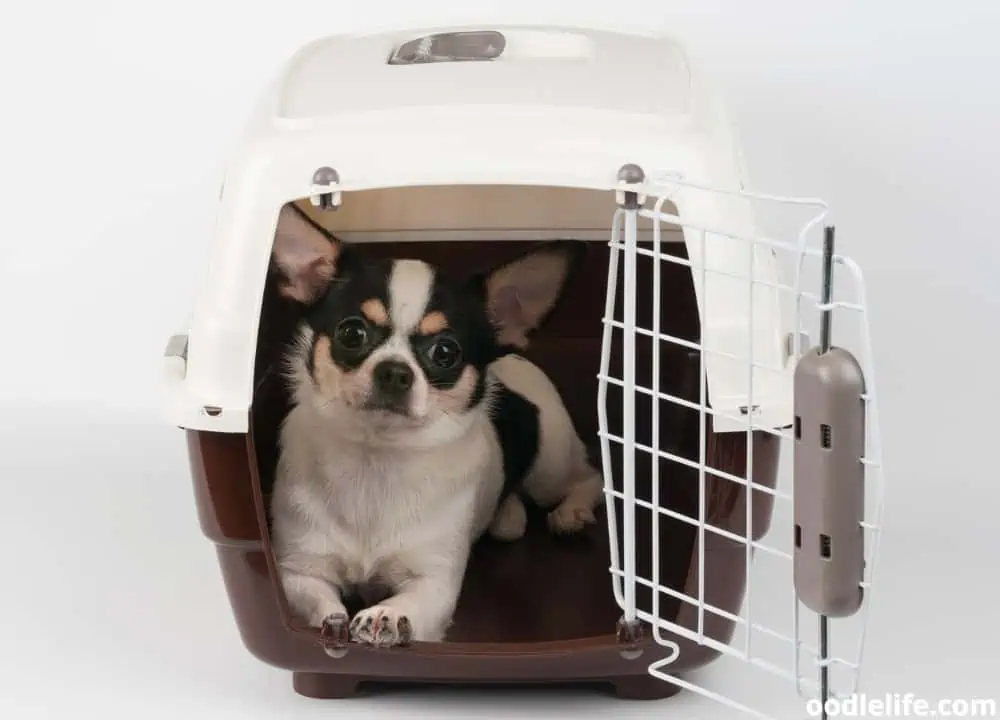
Is There Anywhere You Should Avoid Putting Your Dog’s Crate?
There are no hard and fast rules when finding somewhere to put your dog’s crate but there are a few things to watch for and avoid. First and foremost, be aware of how the seasons can impact where your chosen crate location is. If you put their crate in direct sunlight during the summer months and have the crate door closed, they can’t move to cooler areas so you risk heatstroke.
Similarly in the winter, if they’re placed in a draft then you can have a cold and shivering puppy without even realizing your mistake.
Places that have constant ambient noise like right next to a humming refrigerator can stop your dog from settling properly. The last place is more personal preference but I’ve never seen anyone put a dog crate in the bathroom. That isn’t to say you shouldn’t, it’s just a rare if not unheard of choice.
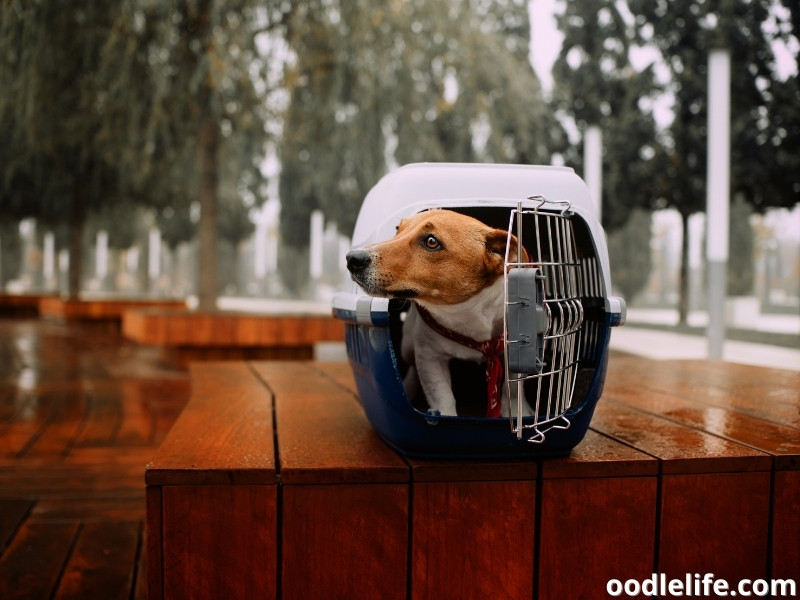
Keeping Their Crate a Fun and Positive Place To Be
Once you’ve solved the mystery of where to locate this valuable training tool and cozy hideaway for your dog, the work comes in the form of getting your dog to appreciate it. If you’re crate training a puppy from a young age, it’s often a little easier to keep them contented by getting them used to sleeping in there at night and giving them their meals in their safe place. Older dogs may not be as quick to warm to the idea if they’re not used to it.
You can try things like putting their favorite bed in there or using it as a place where they get the highest value goodies to support that it’s a really good place to be.
Crate doors should only be shut when your dog is fully comfortable. You risk poisoning the crate if you make it somewhere they feel confined in too soon. Similarly, a crate should never be used as a punishment.
There is a big difference between putting your dog in their crate with something fun to do or chew on to keep them busy but it should never be used as a negative time out ‘sit and think about what you did’ place. Crates should be kept safe and fun otherwise your dog is just not going to want to use them anymore.

Conclusion
The best place to put your dog’s crate is a conversation you need to have with your dog. Or more accurately, you might have to try a few different places until you manage to work out the exact location your dog wants to relax in. There are only a few wrongs, a lot of rights, and just a couple of questionable choices where this decision is concerned.
As long as you choose somewhere your dog is comfortable, happy, and can turn off without the risk of getting too hot or too cold then there isn’t much more to consider.